Guitar legend Carlos Santana has enjoyed a tremendous resurgence in popularity and cultivated a new generation of fans over the past couple of decades via his collaborations with the biggest names in pop music. He made a huge impact in 1999 with Supernatural, which featured the multiple Grammy-winning hit “Smooth” with vocalist Rob Thomas, and other guest appearances by the likes of Eric Clapton and Dave Matthews. Santana’s three subsequent releases have followed that winning formula and focused on vocal-driven numbers with a star-studded cast including Michelle Branch, Steven Tyler, Chris Cornell, India.Arie, and Nas, among many others. But while these outings have cast him as a pop culture icon, his die-hard guitar fans longed for some new incarnations of what they consider “classic” Santana—the guy that kicks ass on the 6-string.
Shape Shifter, Santana’s first album on Starfaith Records, finally brings his guitar prowess back to the forefront. The outing comprises primarily instrumentals that Santana wrote from 1997 to 2007. “I felt like it was needed,” Santana says of his re-focus. “I had been appeasing and complying with a lot of major artists and singers from Supernatural on. But I kept hearing from different people, and, from my heart that it was time to do something where we just hear the Mexican playing the guitar,” he explains. It’s the first Santana release in recent memory that doesn’t feature a mega-star vocalist, but the album does feature perhaps the biggest star in Santana’s eyes: His son, Salvador plays piano on the album’s two closing tracks, “Canela” and “Ah, Sweet Dancer.” He heard the latter tune in a taxi in Hamburg, Germany, and was so taken aback that he had two friends contact the radio station and track it down. “It’s a beautiful song, and so I wanted to record it with my son,” says Santana.
You would think that Santana might start taking it easy after selling more than 100 million records and nabbing 10 Grammy awards over 40-plus years—especially considering he turns 65 this July. But there’s no retirement in Santana’s plans. In fact, he’s going stronger than ever. In addition to his new album, he just kicked off a two-year residency at the House of Blues at Mandalay Bay in Las Vegas. We recently got a taste of what it’s like to be Carlos Santana, as well as an inside scoop on the recent additions to Shape Shifter, his gear arsenal, and how his instrument choices affect his sound.
How did Shape Shifter come about?
Everything comes from the need within. Like John Lee Hooker used to say, “It’s in you, and it’s got to come out.”
Your solo on “Canela” sounds really inspired, particularly with those aggressive overbends and tremolo-picked unison bends, during the last minute of the track, as you play the melody out. What ignited such passion there?
Sometimes you get really … how do you say it without getting weird? Sometimes you get spiritually horny and you have this molecule screaming that you need to be aggressive—but not hurtful. Even though the song is gentle in a certain way, I felt like I had to honor the dynamism and energy. Because at this point, I’m almost 65, man, and what I’m really into more than ever is the thing that I love about Jimi Hendrix and Sonny Sharrock, which is energy. I don’t apologize for it—I’m actually grateful that I have it and it’s just about learning to direct it without harming anyone.
Now, this spiritual horniness, how does it manifest itself? Do you just get the urge in the middle of a song or is it present even before getting to the studio?
You know some days you just wake up with an abundance of energy and you just need to ride a bike, or play tennis, or take a walk up the hill or something. All of us as humans have an abundance of energy and sometimes, if you’re not exercising or doing something with it, it spills over on you. It needs to come out. Some people get cranky, some people talk too much, and some people do this or that. For me, when I’m in the studio, sometimes I need to be aware of this. “Is it okay for me to really spill over with energy?” And I said, “Yeah.” I validated myself and so I went for it.
Listen to "Mr. Szabo" from Shape Shifter:
“Shape Shifter” has several parts that remind me of Michael Jackson’s “Beat It.” Was that at all an inspiration here?
[Laughs.] We both get bass lines from James Brown [hums a bass figure]. It’s the sequence of repetition. For me, repetition is not redundant or boring. Done the right way, it helps create a vortex that helps your feet get off the ground.
Can you elaborate on what you mean by “the right way?”
It’s intentionality. For example, it’s not so much what chord you play or what amplifier you’re playing through. It’s more about, “What were you thinking or feeling when you hit that chord or that note?” That’s what makes you into B.B. King, Albert King, Freddie King, Otis Rush, Buddy Guy, Jeff Beck, or Jimmy Page. What were they thinking and feeling at the time they played those notes? And then it’s not repetition, it becomes like a spell.
You’re turning 65 soon, but instead of retiring, you’re going stronger than ever. What is the secret to your longevity?
I’ve found, in the last four years, that I can shift my perception. When you get out to do things for other people rather than yourself, you get a hundred times more energy. When you wake up just for you, you don’t even want to get out of bed.
It seems most of your energy and focus is on performing and being Carlos Santana. Would you have a hard time adjusting to life without that?
Well, thank God I have a celestial amnesia. If it wasn’t for the fact that people ask me to sign autographs or take pictures with them, I can forget really, really quick that I’m Carlos Santana.
Can you really?
Yeah, and that’s a real gift from God. I’m not into Carlos Santana—I’m into what he does and why he does it. God gave me a whole other incentive, and a crystal clear perception of reality where I don’t get carried away. I know when to get the heck off the stage. A lot of these guys never get off the stage, you know what I mean? When you get into the persona then the same thing that happened to Michael Jackson or Whitney Houston happens to you. Because you start carrying baggage that’s very heavy with illusion and false expectations, and you start feeling like, “Nobody understands my pain.” Then you start hiring psychiatrists, analysts, therapists, and doctors to give you medicine that you really don’t need because your body can actually heal itself if you just give it time.
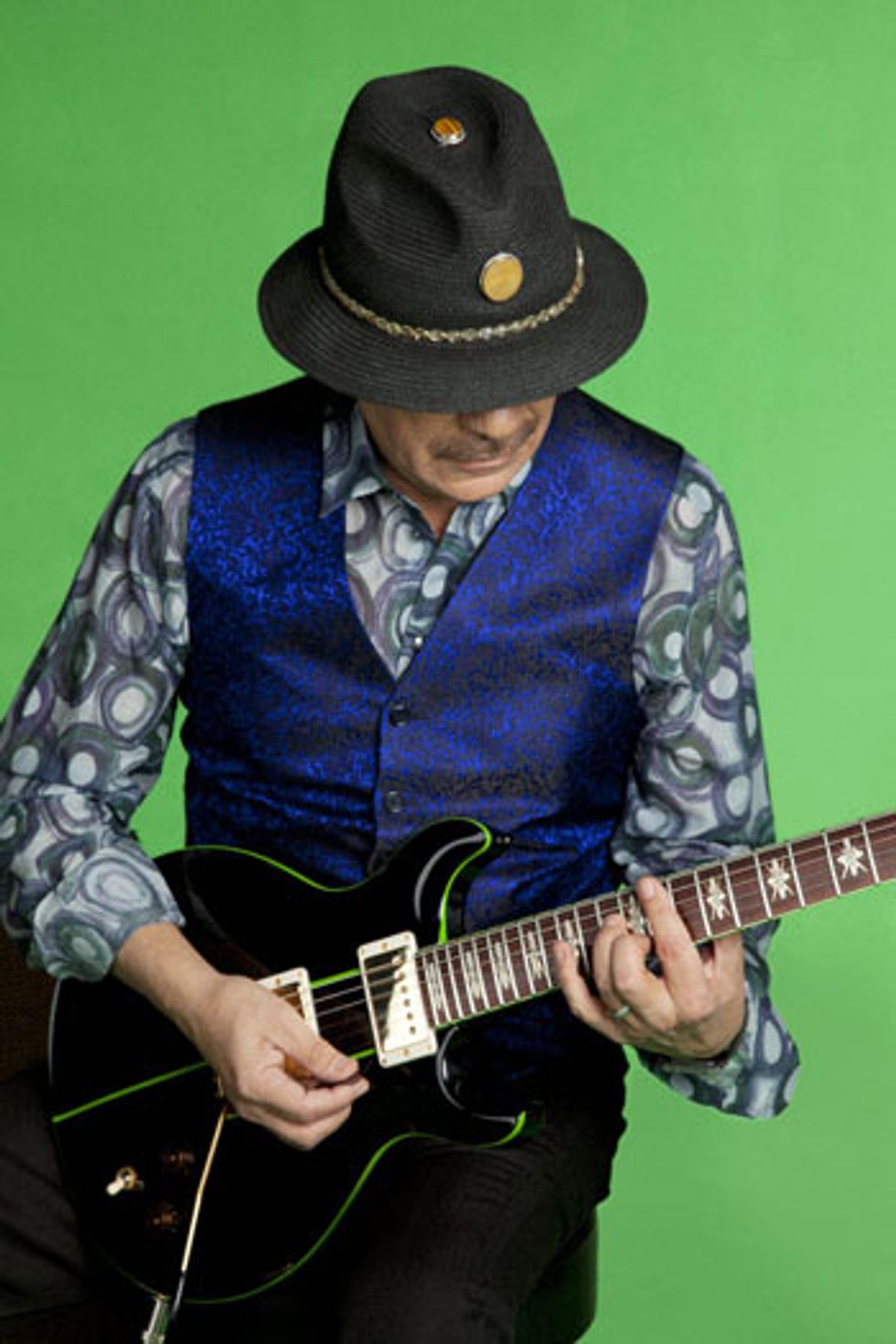
With your upcoming residency at the House of Blues, I’m sure the
audience is expecting to hear the hits. How do you keep it interesting
for yourself when you play something like “Oye Como Va” for the
millionth time?
I keep it interesting by accessing something that I have inside me.
There are switches that I have in my brain and my heart that I click on …
here’s the secret for a lot of people. I call it the “First French
Kiss.” You can will things to feel and be, and become. For example, I
will this “first-time ever” for everything. If I want to play “Black
Magic Woman” how I felt with the innocence, purity, and first-time
sensuality, then I remember how it was when I played it for the first
time at a rehearsal in Fresno, before a concert. That’s the first time
we played it. Gregg Rolie said, “Man, I got this song from Peter Green
called ‘Black Magic Woman,’ and I think we should do it.” We did it at
the soundcheck, and I go back to that soundcheck, or back to the first
time I played “Oye Como Va” on the radio in San Francisco. I just go
back to that place and make it as real as I can, and I do, and therefore
I don’t get tired of playing that song. I don’t count how many, I just
feel how deep.
Your touring band features drummer extraordinaire, Dennis Chambers. Why didn’t you use your wife Cindy Blackman, who is also a phenomenal drummer?
Because her music dictates her soul to do something different. She comes more from the Tony Williams, John McLaughlin, or Miles Davis direction. For me, I’m into that but not only that.
You tend to work with a lot of jazz drummers. What do they bring to your music that say, a rock guy, couldn’t?
They have more freedom than we do. They get to hit everything at the same time and they also create melodies on the cymbals and everything.
But with that said, your favorite musicians are not only just jazz musicians. Are they?
I create a big circle and put the number ones in there: Tony Williams, Elvin Jones, Buddy Rich, Art Blakey, John Bonham, Ginger Baker. You know, they’re all number ones to me. Or take the drummer in Bob Marley’s band. Even when you just hear the music without Bob Marley, and the band is just jamming, you know it just doesn’t get any better than that, for what that is. When you hear Metallica, it doesn’t get any better, for what that is. You have to give credit to Lars and everybody.
How has your conception of tone changed over the years? Are you still chasing the same singing tone?
No, I don’t chase sound anymore. I stopped chasing it. It’s in my limbs, it’s in my vitals, it’s in my heart, and it’s in my fingers. I just plug in and turn knobs until it doesn’t sound offensive, until it doesn’t hurt my teeth.
Some of the tones on Shape Shifter, like the ones on “Ah, Sweet Dancer,” sound a bit bassier than your signature tones. Is there a reason why?
I think it was the placement of the microphones, plus I had to be very careful because my son was playing acoustic piano on that one. I had to play softer and roll more bass so I could crank it up. Usually if you don't crank it up, things sound thin.
After immortalizing the Mesa/Boogie Mark I throughout your career, you added a Dumble, and most recently, a Bludotone to your arsenal. What do they offer that the Boogie doesn’t?
Bludotone did something that is really incredible that, with all due respect to Boogie and Dumble, they have yet to do. With Boogies and Dumbles, you have to turn them up loud to get real fullness. The Bludotone you can play full like, excuse the expression, a full erection, but at a different volume without sounding shrill or weird. Bludotone found something that makes the amplifier very robust and warm without having to crank it up past 7.
I understand that PRS recently made you a guitar with three single-coil pickups, and that you also have a ’63 Strat and a Strat-style guitar in your arsenal. Are you able to get that liquid, vocal tone without humbuckers?
Not yet. A Strat is a Strat. If I want to do a song that sounds like Stevie Ray or Jimi or Jeff or Eric, well… you have to play a Strat through a Dumble to get that sound. I mean, I respect Paul [Reed Smith], he’s my brother. But, a lot of musicians use a keyboard to try and impersonate a trumpet or a trombone, and they think they sound like it. Then I tell them, “No [laughs]. A trombone sounds like a trombone and you sound like a synthesizer trying to sound like a trombone. Why can’t you get that straight?” I give them credit for trying, and I think the only thing that computers have gotten close to replicating are cellos and flutes. The rest is…no, not yet. And so it’s the same thing with Strats. We’re still trying on it but I’m getting the feeling that with a Strat, you just have to leave it alone because it’s a Strat.
Santana’s Gear
Guitars:
PRS Santana II, ‘63 Fender Strat, custom Strat by Jesse Amoroso (Cowtown Guitars), Alvarez nylon string, Toru Nittono nylon string
Amps:
Mesa/Boogie Mark I, Dumble Overdrive Reverb 100 watt, Bludotone Universal Tone
Cabs:
PRS 4x12 with Celestion v30s, Bludotone open-back cab with two Celestion G12-65s and two Austin Speaker Works speakers, Tone Tubby hemp cones (sometimes)
Effects:
Customized Teese RMC3 wah, Pete Cornish LD-1, Pete Cornish AC powered splitter, Pete Cornish custom DI
Strings:
GHS Santana .0095–.043 (on PRS guitars), .0105–.048 (on Strats)
Cables:
Handmade by Edwin Adair using Canare GS-6 cables with Neutrik connectors
Picks:
Yamaha .030 Triangle
Straps:
El Dorado Guitar Accessories, PRS
Information provided by Santana’s guitar tech, Edwin Adair
YouTube It
Watch Carlos Santana channel his unwavering energy into glorious guitar work during these live performances.
Santana reunited with members of his original band that played Woodstock to perform “Black Magic Woman” at the 1998 Rock and Roll Hall of Fame Induction ceremony with the song’s composer, guitar hero Peter Green.
YouTube search term: Carlos Santana ft. Peter Green “Black Magic Woman” Live
Guitar legends converge at the Crossroads Guitar Festival as Carlos Santana shares the stage with Eric Clapton to perform “Jingo.”
“Oye Como Va,” written by the late Tito Puente, became immortalized in the hands of Carlos Santana. In this clip from the Live at Montreux 2011 DVD, Santana demonstrates that even after playing this song for decades, the fire burns brighter than ever.



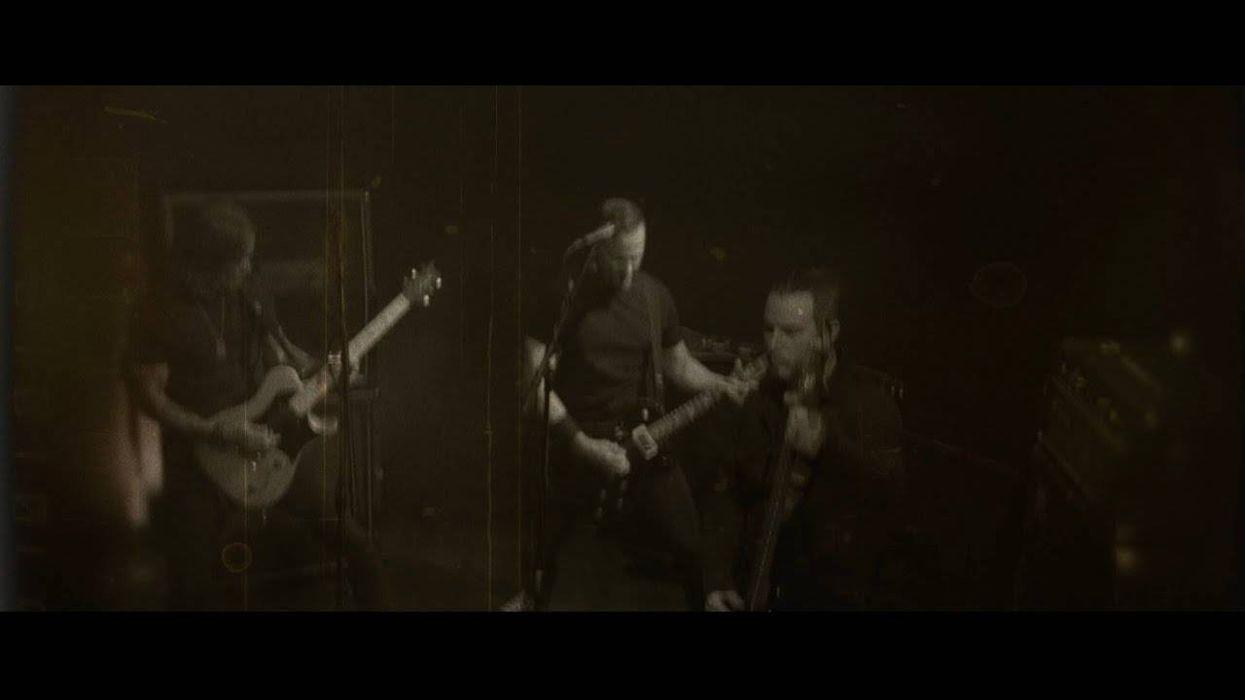
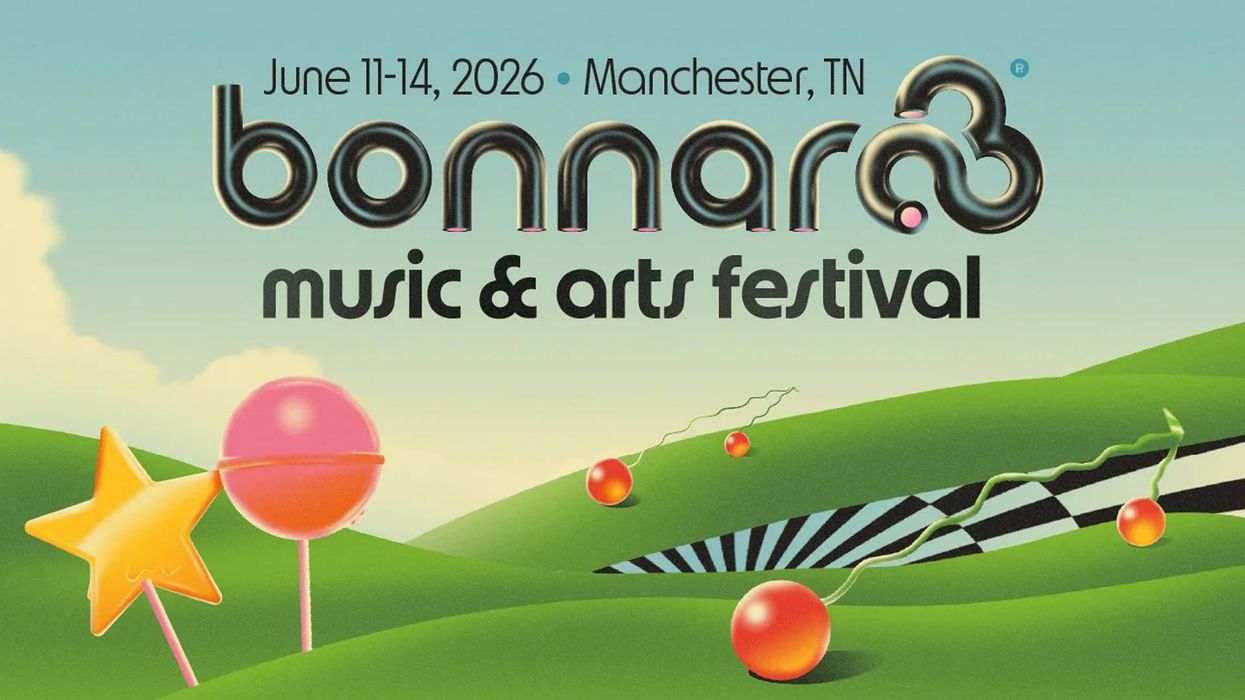
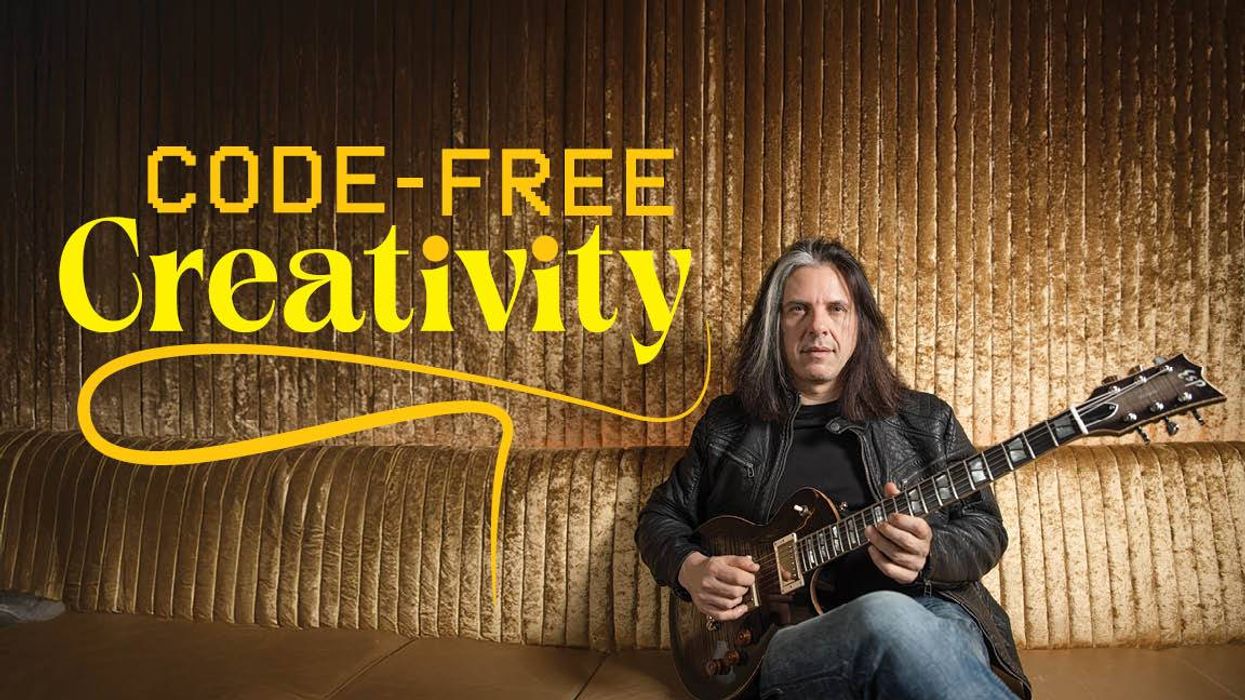
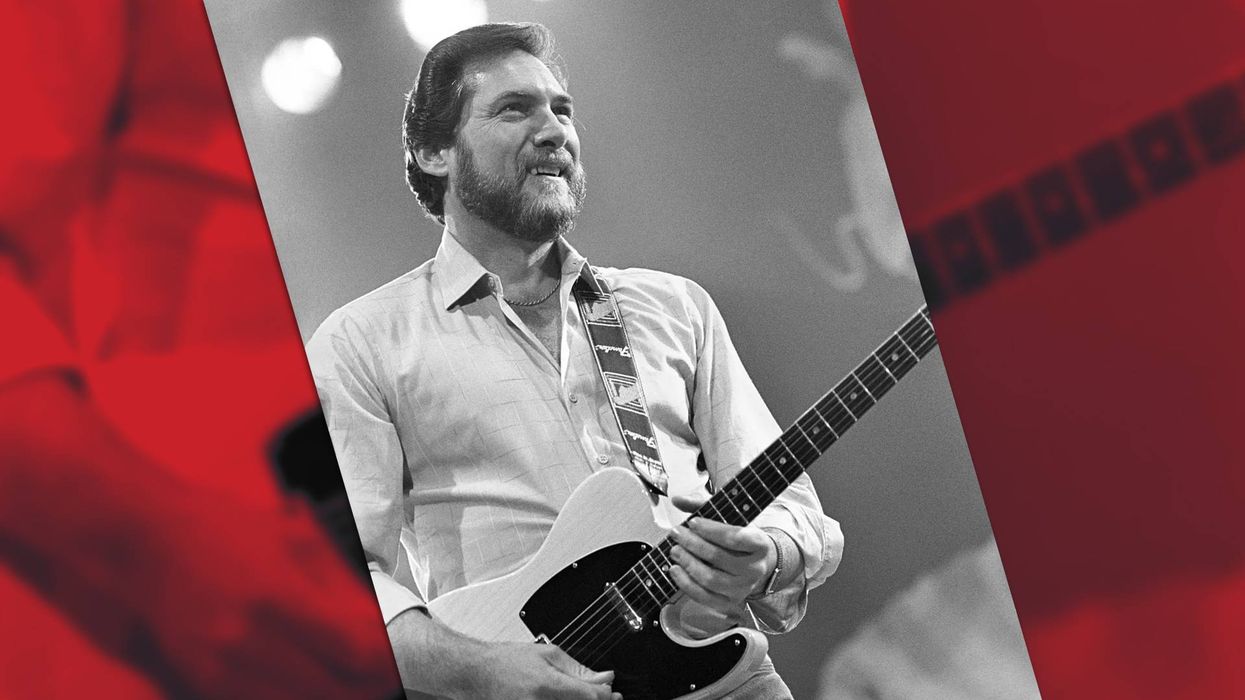
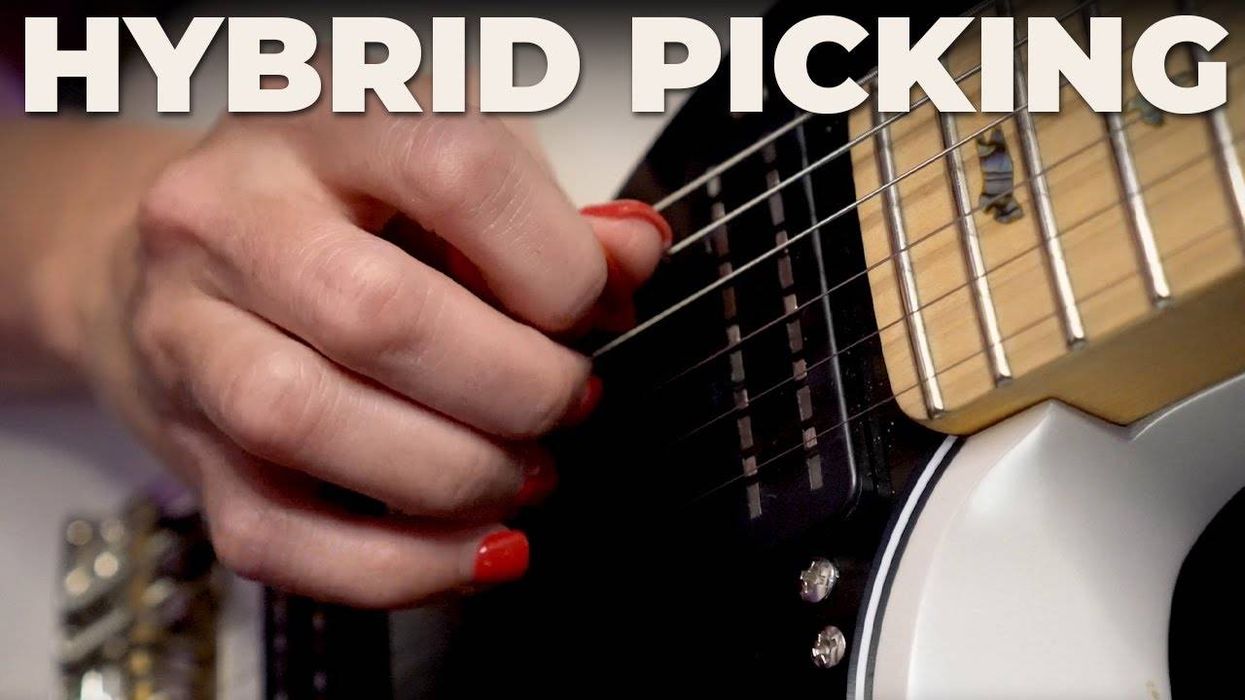
















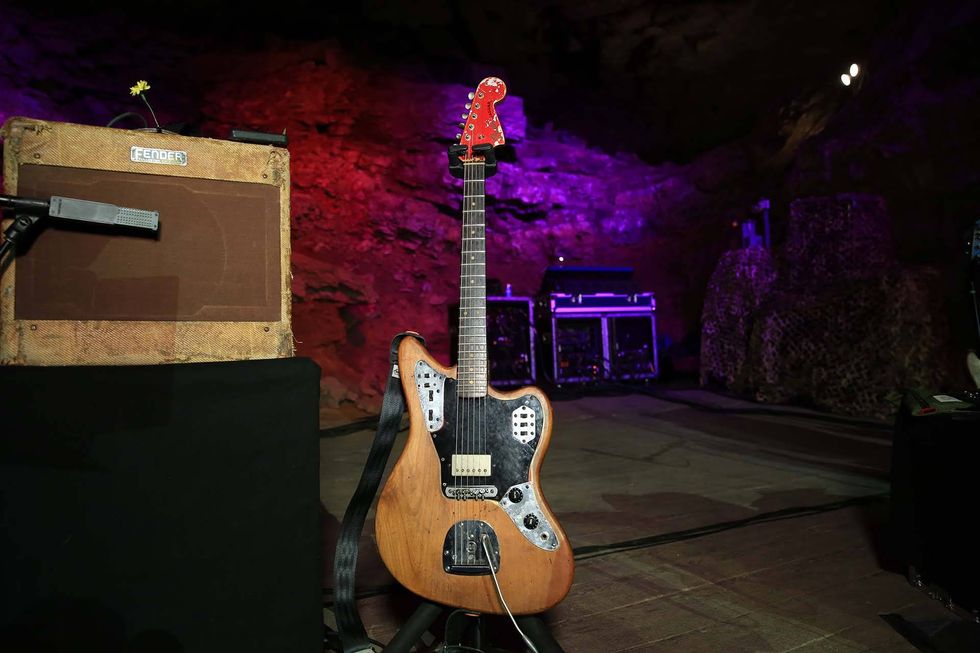
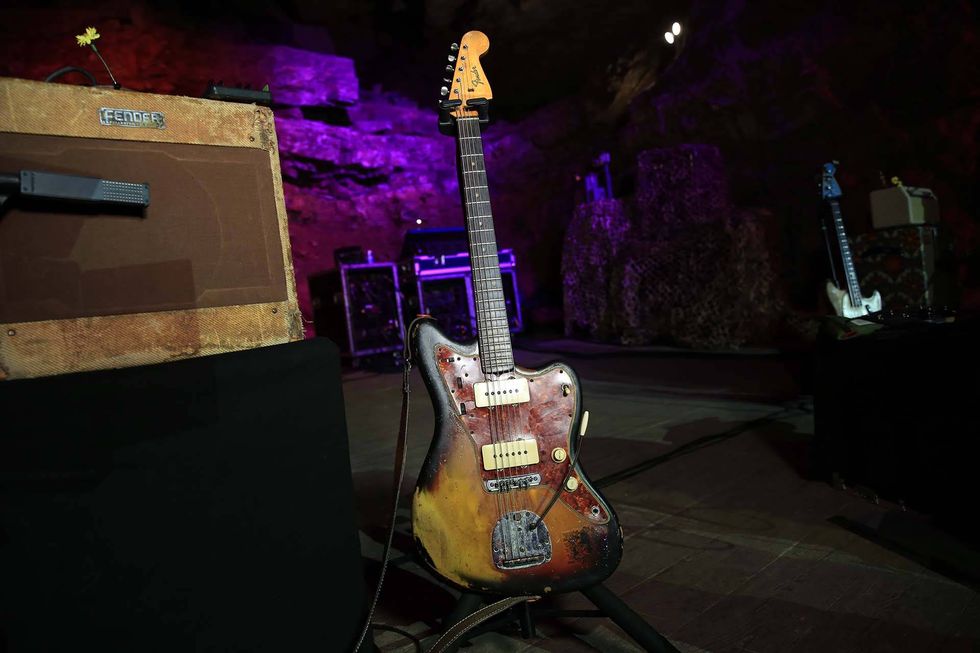
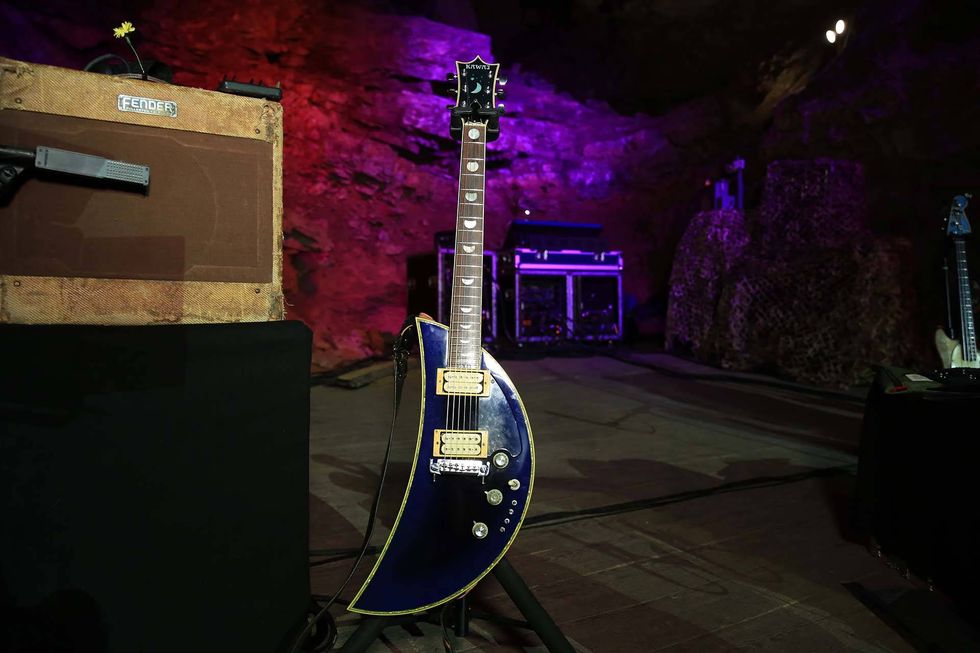
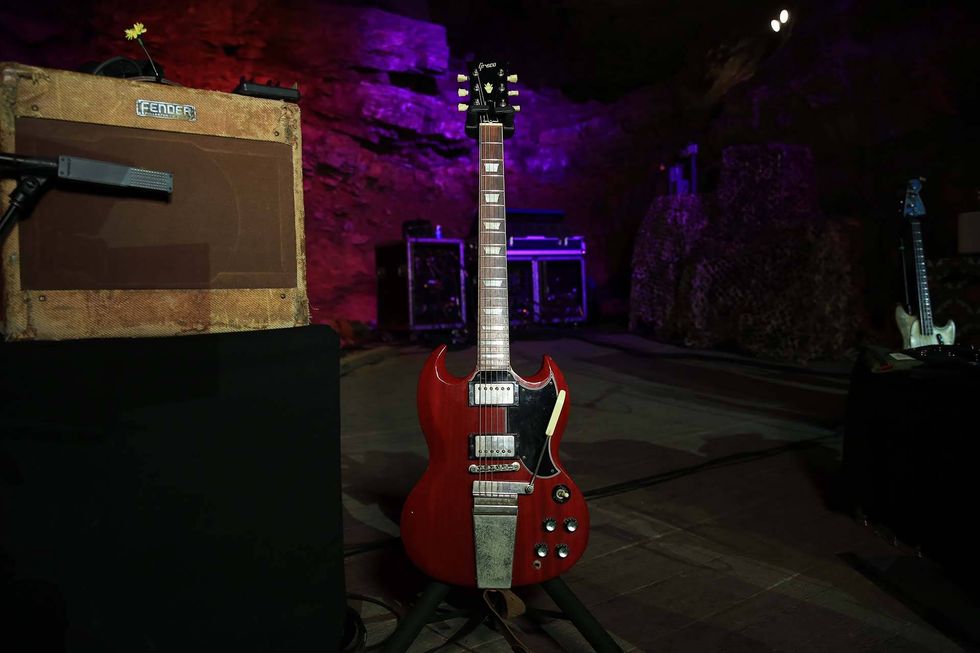
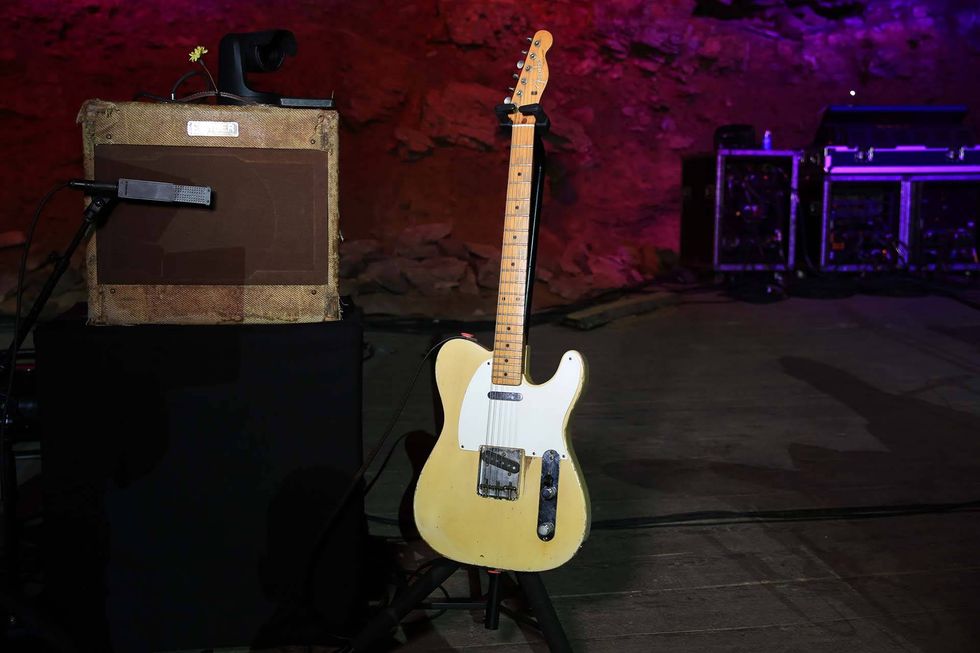
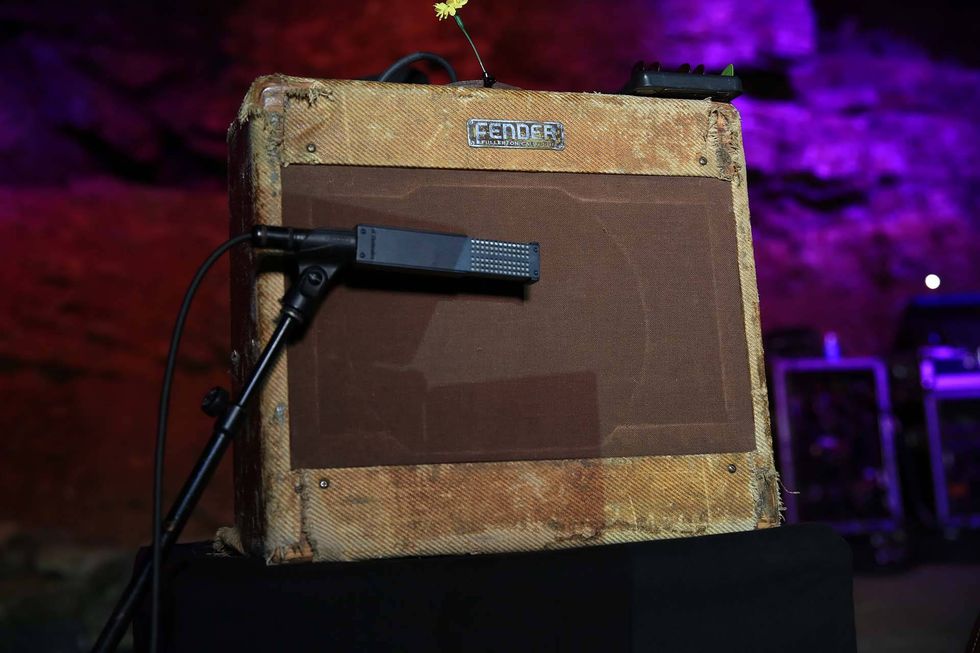
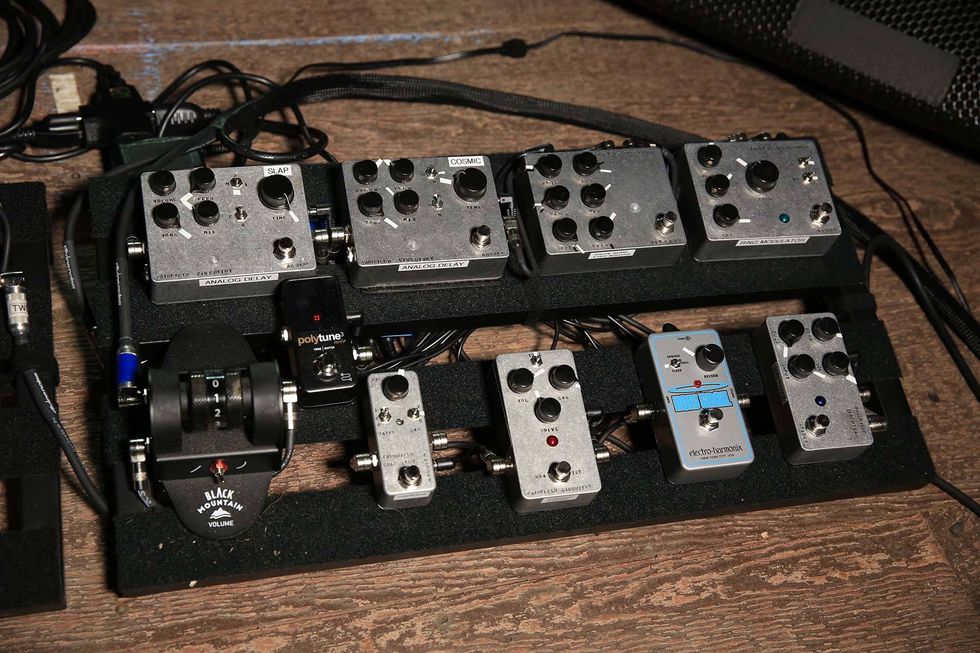

![Rig Rundown: AFI [2025]](https://www.premierguitar.com/media-library/youtube.jpg?id=62064741&width=1245&height=700&quality=70&coordinates=0%2C0%2C0%2C0)




















 Zach loves his Sovtek Mig 60 head, which he plays through a cab he built himself at a pipe-organ shop in Denver. Every glue joint is lined with thin leather for maximum air tightness, and it’s stocked with Celestion G12M Greenback speakers.
Zach loves his Sovtek Mig 60 head, which he plays through a cab he built himself at a pipe-organ shop in Denver. Every glue joint is lined with thin leather for maximum air tightness, and it’s stocked with Celestion G12M Greenback speakers.






